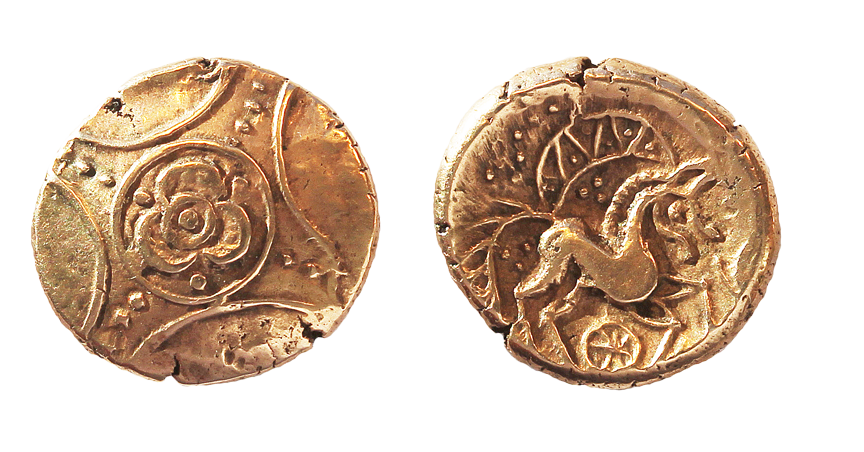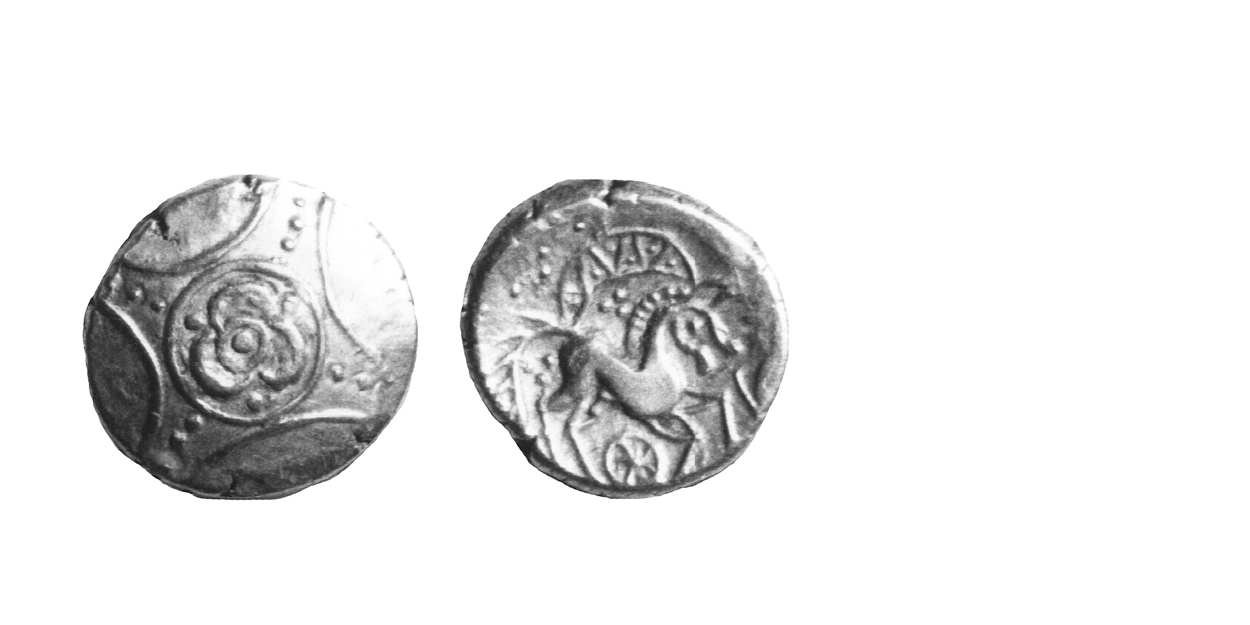
History
Last Uninscribed Coinages (Info)
Introduction 54 B.C - 20 A.D.
Towards the end of the war, coin imports largely ceased and locally-made coins now circulated in specific areas, with little overlap (51). As a result, findspot maps delineated tribal territories with increasing clarity as time goes on. The story of the postwar coinage is one of three major regions: the North Thames, the South Thames, and that of the Peripheral Tribes.
North of the Thames, the Trinovantes/Catuvellauni emerged as a powerful economic force and maintained their trading networks, evidently with success. They established an economic, if not a political hegemony over their neighbours, the Iceni, and seem to have had some influence over the Icenian coinage.
South of the Thames, the Atrebates/Regni/Belgae continued as the most powerful tribe. Cantian territory, at first independent with its own coinage, came under increasing Trinovantian/Catuvellaunian influence. Eventually, it became a disputed area with the Atrebates/Regni/Belgae and Trinovantes/Catuvellauni vying for control.
The Peripheral Areas included the territories of the Corieltauvi, Dobunni and Durotriges. These three tribes maintained their independence and each had its own coinage.
Next Section – Last uninscribed coinages North Thames region

